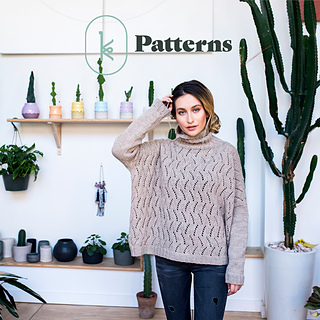patterns >  Kelbourne Woolens and 1 more...
Kelbourne Woolens and 1 more...
> Norbert the Narwhal








Norbert the Narwhal
Norbert the Narwhal, with his wide grin and magical tusk, is destined to be your newest BFF.
Did you know?: Narwhals’ distinctive “unicorn horns” are actually a giant tooth!
Can’t get enough cute critters? Check out Herman the Hermit Crab, Manny the Manatee, and Pollyanna the Pufferfish!
Specifications
YARN
Kelbourne Woolens Germantown (100% N. American wool; 220 yds/100 gm skein): sage 340 (MC), 2 skeins; goldenrod 725 (CC), 1 skein.
GAUGE
19 sts and 20 rnds = 4” (10 cm) in SC in the rnd.
Optional: Work directions for one Side Fin. Fin should measure 2” (5 cm) across top edge of fin when folded flat and about 1.25” (3 cm) tall (from beg loop to last rnd).
HOOK
1 – F (3.75 mm).
NOTIONS
Tapestry needle, 3 Stitch markers including 1 contrasting st marker, yarn needle, polyester fiberfill for stuffing, 2 black buttons (no shank) 1” (25 mm) in diameter, 2 white buttons (no shank) 1.5” (38 mm) in diameter, sewing needle and black sewing thread.
SIZE
Approx 14” (35.5 cm) long excluding horn. Head measures 17.75” (45 cm) in circumference, excluding lower lip. Horn measures approx 5.25” (13 cm) long.
SKILLS
Working in the round, increases, decreases, sewing pieces together.
Worthy of Note
Norbert’s lower lip is made first beginning with a foundation chain, then working around both sides of foundation chain, and continuing in the round until lip is complete. Then the Narwhal is worked from nose to tail beginning by making a half-circle shape in turned rows, then working around the half-circle in rounds. Rounds are continued throughout head (incorporating the pre-made lower lip), and body, decreasing to shape the tail section.
Side Fins, Tail Fin, and Eyelids are worked separately and stitched to head and body. Every once in a while, uncounted stitches are worked to adjust the beginning of rounds – this is to counteract the natural shifting of the beginning of rounds when you work in the round. Directions for working these un-counted stitches are within the pattern.
The spiraling of the horn happens as a result of a few increases right next to a few decreases. Be careful not to miss the first half of the first decrease as it gets a little crowded with all those increase stitches next to it. Working your decreases tightly helps to avoid spaces between stitches for the stuffing to peek out.
Eyes are made with stacked buttons. La Mode style #20504 and #48219 are used in the sample.
Images: Linette Messina Kielinski
3440 projects
stashed
2855 times
- First published: February 2023
- Page created: February 3, 2023
- Last updated: November 27, 2023 …
- visits in the last 24 hours
- visitors right now




